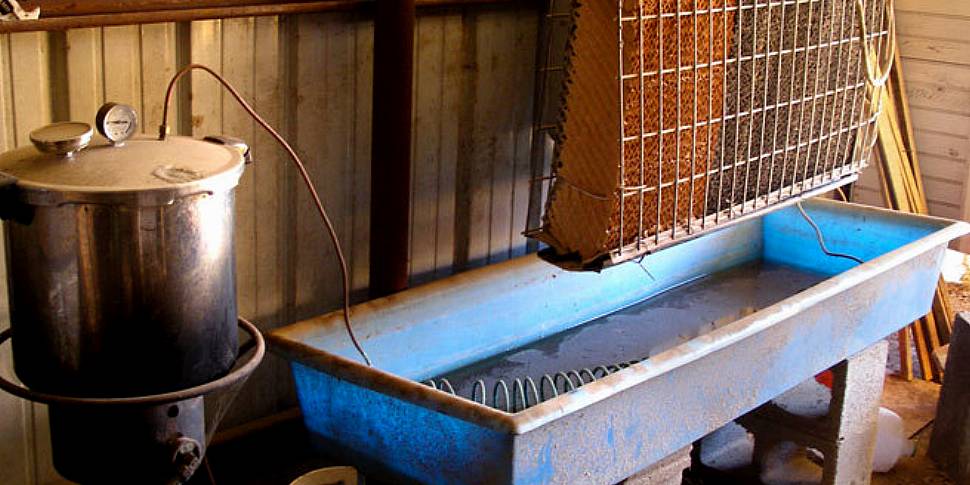Last week it emerged that a toxic batch of an illicit alcoholic drink had killed over 80 people in several parts of Kenya. More than twice that number were being treated in hospital for a series of symptoms including abdominal pain, blurred vision and blindness. On Thursday two people were arrested and police are searching for more suspects.
According to authorities, the alcohol was consumed on Sunday and Monday in five counties across central Kenya. On further investigation it was discovered that the drink in question had been laced with methanol to boost its strength.
This is not the first time a story of this nature has emerged from Kenya. Back in 2000, 128 people died and a further 400 had to get medical treatment after drinking a particularly poisonous batch of booze in a suburb of Nairobi. In June 2005, in the village of Mukatano, some thirty kilometres south of the capital, twenty villagers died after consuming illegally produced alcohol, while in 2010 the Nairobi slum of Kibera witnessed the passing of seventeen people in similar circumstances.
While these deaths are sad and shocking they are not surprising. The distillation and sale of home-brew alcohol is big business in Kenya. Two years ago a report in Time magazine revealed how one distillery in the Nairobi slum, Mathare, regularly turns over more than E700,000 per annum and employs about 100 people. Police do their bit to keep up the pretence that they are on top of things; the occasional raid is used as a cover for the regular hand-outs they are given to leave the brewers alone.
Kenya’s moonshine is called Chang’aa which, rather darkly, translates as ‘Kill me Quick’. Traditionally, it is made from millet and maize but in recent years other ingredients, including jet fuel and embalming fluid, have been found in some batches. It is cheap to make, cheap to buy and therefore extremely popular amongst the poor and particularly poor young men.
Unemployment rates in Kenya have sat stubbornly still at 40% for the last two years. Of those out of work, 70% are between the ages of 15 and 34. In a country with such high unemployment it is inevitable that people will turn to alcohol but social workers and those involved in educating people on its dangers point out that Kenya also has an AIDS rate of about 6%. Of course that figure increases among the poor and the prevalence of alcohol in poor neighbourhoods only increases the chances of the disease spreading.
Sleeping on the job?
In 2010, the Kenyan government tried to regulate the making of chang’aa in the hope that producers of the moonshine would come in from the cold and adhere to a strict set of rules that would make the brew safer. Of course brewers have always maintained that they were never ones to contaminate the drink in the first place. Worryingly, it appears that the contaminated batch which led to last week's tragedy may have come from a regulated company, Comrade Investments. If that is the case, it means that regulators were not doing their job and it is likely that some administrative heads will have to roll - indeed, according to Kenyan broadcaster KBC, 52 officials have already been given the boot for sleeping on the job.
The beginning of the decade also saw the government offer local and multi-national drinks companies tax breaks enabling them to sell their beer cheaply. Until June 2013, beer brewers were the beneficiaries of a tax exemption which kept prices low and offered the poor a less potent alternative to cheap spirits; at least that was the logic behind it. The tax exemption ended last summer when the government realised it was missing out on a hefty stream of revenue. The new excise duty brought with it higher prices and while the middle classes might be sticking with and consuming more beer, chang’aa is simply better value for the consumer who is simply looking to get blotto. Some have questioned whether fighting fire with another brand of fire was the answer.
According to a 2011 report issued by the World Health Organisation, Kenya ranks 118th out of 189 countries when it comes to average per capita alcohol consumption. It also found that 85% of the population had not touched a drop for the year up to the survey. However, of those who had consumed alcohol a quarter had binged.
Kenya’s National Agency for the Campaign against Alcohol and Drug Abuse estimates that 4million people in the country consume illegal alcohol. It is a staggering reality and one that seems likely to result in more devastation.
You can follow Jonathan on twitter @deburcabutler









